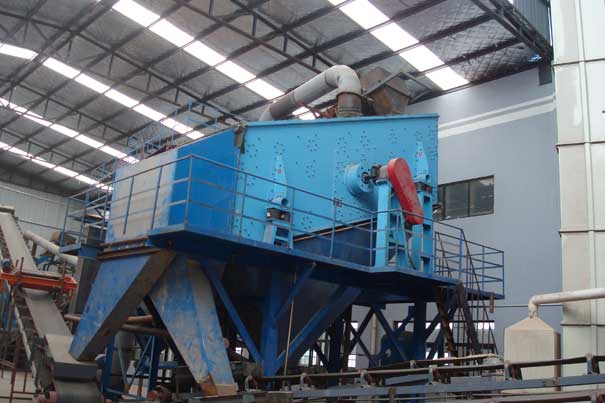- Amplitude and vibration frequency
The greater the vibration amplitude, the less blockage of the screen holes, and the easier it is for the material to penetrate the screen. The vibration frequency affects the beating state of the material on the screen surface. Too high or too low will result in low screening efficiency. Therefore, the appropriate amplitude and vibration frequency must be selected according to the material.
For example, if you want to classify materials, choose low frequency and large amplitude; if you want to remove the medium, choose high frequency and small amplitude; if you encounter wet small particles, you need low frequency and large amplitude. - The inclination angle of the screen surface
The angle between the screen surface and the horizontal plane is called the inclination angle of the screen surface. The larger the inclination angle, the higher the speed of the material running on the screen surface. The shorter the residence time, the lower the screening efficiency. However, if the angle is too small, the material processing speed will be slower and the productivity will be reduced. In order to maintain an ideal state, the angle should be controlled at 5 to 25 degrees. - The width and length of the screen surface
The width of the screen surface affects the processing capacity of the screen, and the length affects the efficiency of screening. The screen surface is too narrow to cause the material to be too thick and difficult to pass through the screen holes. If the screen surface is too short, the material stays on the screen surface for too short time, and the chance of the material passing through the screen holes will be reduced. But too wide or too long is not advisable, the screening efficiency is not improved much, but the screen structure is bulky and wastes space.

- The material of the screen surface
The screen surface is divided into metallic materials and non-metallic materials. In actual production, try to choose non-metallic materials.
Studies have shown that the screening efficiency of non-metallic materials is 20% higher than that of metal screens, and the service life is 25 times that of metal screens, which greatly reduces installation time and improves equipment operation rate. At the same time, non-metallic materials have low noise and a comfortable working environment. - The nature of the material
Different materials have different properties. For example, when the water content of the material is high, it will have a certain degree of viscosity, which is easy to agglomerate, and it will block the network during screening. So choosing the type of vibrating screen is also very important.
For materials with large specific gravity, large particles and high hardness, circular vibrating screens should be selected; for materials with light specific gravity, fine particles and low hardness, linear vibrating screens should be selected. - Feeding method
Don’t feed the material at one end, it will cause waste of the remaining part of the screen surface, and the feed end will wear out first, so try to use all the space of the screen surface, feed the material along the material running direction to the screen surface, distribute it evenly, and don’t overload it. - Regular maintenance
Frequent replacement of parts, stoppage of production, naturally low production efficiency, so regular maintenance and repair is very important.
Check the vibrating screen regularly to remove dirt and oil, repair the holes in time, and hook out the debris with hooks to avoid affecting the movement of the vibrating screen. The screen must have sufficient tension and fixing force. The slack of the screen will cause adverse effects on the adjustment of the amplitude and vibration frequency. It is also easy to accumulate materials and shorten the life of the screen.

